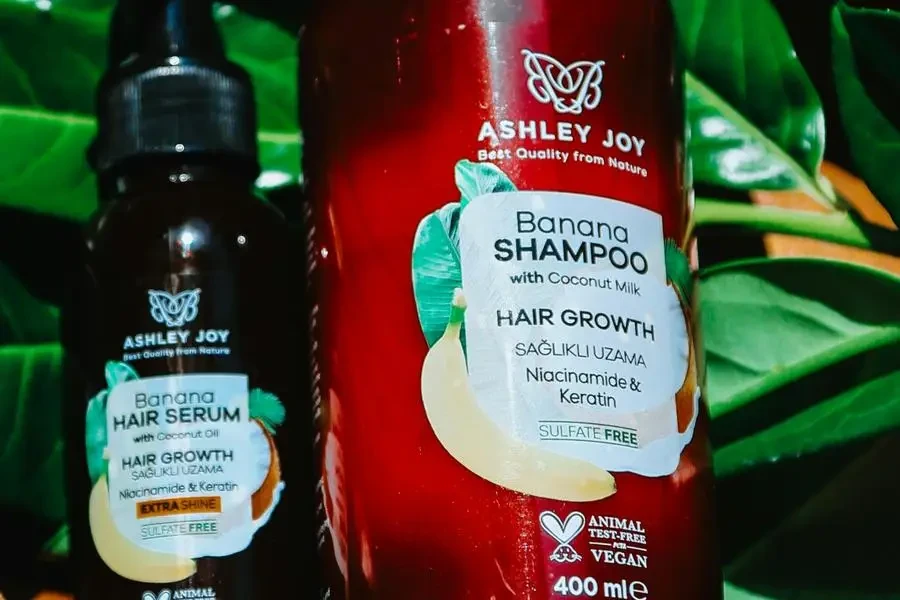The demand for shampoos tailored to tackle hair loss is expected to soar in 2025. This surge is propelled by innovations in hair care ingredients and a heightened consumer focus on personal grooming. In this article, we provide an overview of the market landscape, highlight key trends, and offer strategies for navigating the dynamic realm of hair loss shampoos.
Table of Contents:
1. Market overview of shampoo for hair loss
2. Product innovations and ingredients
3. Consumer preferences and demographics
4. Marketing strategies for hair loss shampoos
5. Distribution channels and retail trends
6. Future outlook and growth opportunities
Market overview of shampoo for hair loss

The global market for hair loss treatment products, prominently featuring shampoos, is experiencing significant expansion. Research and Markets data indicated that the market size reached USD 6.03 billion in 2024, with forecasts predicting a compound annual growth rate (CAGR) of 7.56% through 2030. The Asia-Pacific, in particular, stands out as a burgeoning region, fueled by urbanization, evolving beauty norms, and a deeper digital market reach.
North America’s market will likely sustain steady growth due to heightened consumer awareness and diverse availability of advanced hair care solutions. Meanwhile, in Europe, the demand is increasingly veering towards natural and organic components in hair loss shampoos. As customers grow more attuned to hair health, shampoos promising effectiveness coupled with sustainability are becoming increasingly sought after.
Several factors contribute to this market momentum: a rise in hair loss cases across all age groups, stress-induced hair health problems, and a growing trend for comprehensive hair care solutions. Additionally, the proliferation of e-commerce and the role of social media in marketing have amplified market growth, streamlining the purchase process of specialized hair loss shampoos.
Product innovations and ingredients

Continuous innovation is a hallmark of the hair loss shampoo sector, evident in both product formulations and ingredient choices. Brands are increasingly gravitating towards natural, organic, and sulfate-free variants to meet the demands of health-conscious consumers. Ingredients like biotin, caffeine, saw palmetto, and ketoconazole are widely recognized for their ability to stimulate hair growth and minimize hair loss.
One emerging trend is the development of Ayurvedic and herbal shampoos that draw on age-old medicinal wisdom. These products commonly contain hair-strengthening and scalp-nourishing elements such as bhringraj, amla, and neem. The introduction of advanced delivery systems like microencapsulation is ensuring deeper scalp penetration of active ingredients for optimal effectiveness.
Moreover, gender-specific shampoos are gaining traction, with formulations customized to address distinct hair loss concerns between men and women. For instance, men’s products may incorporate higher levels of DHT blockers, whereas women’s formulations might concentrate on hormonal balance and nourishment. This segmentation allows brands to cater precisely to consumer needs.
Consumer preferences and demographics

A deep understanding of consumer preferences and demographics is pivotal for brands vying for market share in the hair loss shampoo space. A WGSN survey reveals that about 80% of respondents prioritize maintaining hair health, and many express concerns over hair loss and thinning, signaling a vast market for products aiming to enhance both hair health and appearance.
Women form the core consumer base for hair care products, holding a significant market share. They are inclined to spend on premium, customized solutions due to a high propensity for personal care spending. Nonetheless, the demand for men’s hair loss shampoos is climbing, especially among young to middle-aged men searching for effective interventions for hair thinning.
The mounting awareness of hair loss among children and adolescents is another developing trend. Parents seek mild yet effective products to combat hair thinning and scalp conditions in their children, sparking the creation of children’s specialized shampoos, tailored with gentle ingredients for young scalps.
Marketing strategies for hair loss shampoos

To thrive in the hair loss shampoo market, effective marketing strategies are indispensable for capturing consumer attention and boosting sales. Social media, with its influencers and hair care experts, plays a critical role in product endorsements and testimonials. Platforms like Instagram, TikTok, and YouTube have become venues for brands to engage wider audiences and build trust.
Content marketing also proves powerful, with brands producing informative blogs, videos, and tutorials to enlighten consumers about hair loss and product benefits. Collaborations with dermatologists and trichologists further bolster credibility, providing consumers with expert-backed insights.
Personalization stands as a key trend, with brands offering tailored solutions based on unique hair attributes. Online consultations and quizzes assist consumers in finding suitable products, enhancing the shopping experience. Subscription services that provide personalized hair care kits directly to consumers’ homes are also gaining popularity for their convenience and effectiveness.
Distribution channels and retail trends

Hair loss shampoos are experiencing an evolution in distribution channels, with online retail taking precedence thanks to its convenience and comprehensive offerings. E-commerce platforms furnish consumers with detailed product descriptions and reviews, facilitating access to a broad spectrum of options. This move towards online buying is spurred by advancing digital capabilities and the emergence of direct-to-consumer brands.
Specialty stores and pharmacies continue to be essential channels, where consumers can seek professional counsel and purchase products in person. Salons play a significant role by providing recommendations and treatments incorporating hair loss solutions. This trend of in-salon experiences and home kit use is paving new paths for market growth.
The zero-waste shampoo market is building momentum due to the burgeoning demand for eco-friendly packaging and sustainable practices. Brands are introducing zero-waste options like shampoo bars and refillable products, attracting environmentally-conscious consumers. This segment is projected to grow substantially, with an anticipated market size of USD 80.2 million by 2028 and a CAGR of 6.78%.
Future outlook and growth opportunities

The shampoo market for hair loss is poised for substantial growth, spurred by ongoing innovation and shifting consumer preferences. Technological advancements, such as LED scalp masks and scalp-stimulating devices, are revolutionizing the market, offering consumers sophisticated solutions for hair loss.
Holistic hair care is set to expand further, with products blending topical treatments, supplements, and wellness approaches. Consumers seeking comprehensive hair loss solutions will propel the demand for products that nurture both scalp and hair health over the long term. The focus on diversity and inclusivity will drive the development of products addressing various hair types and textures.
In summary, the hair loss shampoo market is on track for notable growth well into 2025 and beyond. Brands emphasizing innovation, sustainability, and personalized care solutions will find themselves well-positioned to meet consumer needs and achieve market success.




